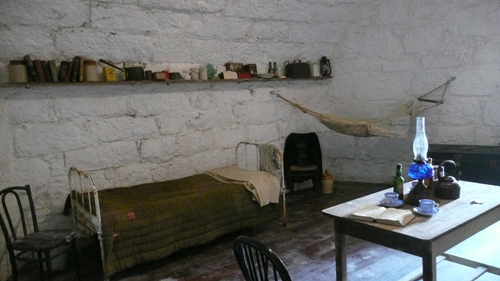The round house in Granbury, Texas, must have been something to see in its day.

Built and designed in 1905 by local banker John E. Brown, it was a mansion with 14 rooms, including a hexagonal grand hall that measured 32 feet across. Each room was finished with a different kind of imported wood, with oak in the dining room, and bird’s eye maple elsewhere. The music room had a concert-size grand piano that had been brought from New York to New Orleans by boat, then overland to Granbury via a wagon pulled by mules.

Unfortunately after WWII the house fell into disrepair. It was occasionally rented by churches because of its large meeting hall, but often left vacant. It was torn down in the 1960s by a builder who bought it in order to scavenge its materials.




